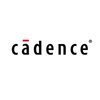Filter interviews by
Analog Devices Interview Questions and Answers
23 Interview questions
A MOSFET graph typically shows the relationship between the input voltage and the output current.
The x-axis represents the input voltage (Vgs) while the y-axis represents the output current (Id).
The graph typically shows three regions: cutoff, triode, and saturation.
In the cutoff region, the MOSFET is off and there is no current flow.
In the triode region, the MOSFET is partially on and the output current increases...
Recursion is a technique where a function calls itself to solve a problem.
Identify the base case - the condition under which the function stops calling itself.
Define the recursive case - the condition under which the function calls itself.
Ensure progress towards the base case with each recursive call.
Example: Factorial calculation using recursion.
An AND gate can be designed using a 2:1 multiplexer by connecting one input to select line and the other input to the data input.
Connect one input of the AND gate to the select line of the 2:1 mux
Connect the other input of the AND gate to the data input of the 2:1 mux
The output of the 2:1 mux will be the output of the AND gate
An XOR gate can be designed using a 2:1 MUX by connecting the inputs to the select lines and the outputs to the data inputs.
Connect one input of the XOR gate to the select line of the MUX
Connect the other input of the XOR gate to the inverted select line of the MUX
Connect the outputs of the MUX to the XOR gate's output
NPN and PNP junctions are types of bipolar junction transistors with different arrangements of layers and doping.
NPN transistor has a layer of p-type semiconductor sandwiched between two layers of n-type semiconductor, while PNP transistor has a layer of n-type semiconductor between two layers of p-type semiconductor.
In NPN transistor, majority charge carriers are electrons, while in PNP transistor, majority charg...
Reduction of 3D Kmap involves simplifying a 3D truth table to minimize the number of logic gates required.
3D Kmap is a graphical representation of a truth table with three variables
Reduction involves grouping adjacent cells with the same output value
The goal is to minimize the number of groups and variables in each group
Simplification can be done using Boolean algebra or Karnaugh maps
Example: Reducing a 3D Kmap wi...
A design engineer is responsible for creating and developing innovative designs for products or systems.
Designing and prototyping new products
Collaborating with cross-functional teams to ensure design feasibility
Using CAD software to create detailed drawings and specifications
Testing and evaluating prototypes to ensure functionality and performance
Making design improvements based on feedback and testing results
Implement code using MUX and multiplier gates for conditional assignment
Use a 2:1 MUX to select between D*E and G*H based on A
Use a multiplier gate to calculate D*E and G*H
Connect the output of the MUX to the input of the multiplier gate
Ensure proper sizing of gates to meet design requirements
Analyzing power consumption in state transitions with bit flips in a state diagram.
State diagram for pattern 1011 can be constructed with states representing each bit configuration.
If overlap is allowed, transitions can occur through intermediate states, reducing power consumption.
Transition from State 0 (0000000000) to State 1 (0000000001) consumes P power due to 1 bit flip.
Transition from State 1024 (1111111111)...
Managing excessive clock frequency involves techniques like frequency scaling and circuit adjustments to ensure stability.
Implement dynamic frequency scaling to adjust the clock speed based on workload demands.
Use phase-locked loops (PLLs) to stabilize and control the clock frequency.
Incorporate voltage scaling to reduce power consumption and heat generation at higher frequencies.
Design circuits with built-in tole...
Analog Devices Interview Experiences
29 interviews found
I applied via Company Website and was interviewed in Dec 2024. There were 4 interview rounds.
(1 Question)
- Q1. Questions related to my resume were asked, specifically pertaining to SQL, Python, dbt and Snowflake
(1 Question)
- Q1. Mixture of technical and managerial
(1 Question)
- Q1. One more round was conducted to understand my project and technical knowledge
(1 Question)
- Q1. Questions based on project and general understanding of pipelines and ETL
I applied via Referral and was interviewed in Nov 2024. There were 2 interview rounds.
50 mcq 40 minutes fast paced
(2 Questions)
- Q1. SQL querying, using window functions and cte
- Q2. Easy dsa using recursion
- Ans.
Recursion is a technique where a function calls itself to solve a problem.
Identify the base case - the condition under which the function stops calling itself.
Define the recursive case - the condition under which the function calls itself.
Ensure progress towards the base case with each recursive call.
Example: Factorial calculation using recursion.
Interview Preparation Tips
I applied via Company Website and was interviewed in Jul 2024. There were 2 interview rounds.
The exam was relatively easy; it only required a review of basic electronics, and it was conducted online.
(2 Questions)
- Q1. Draw the graph of mosfet
- Ans.
A MOSFET graph typically shows the relationship between the input voltage and the output current.
The x-axis represents the input voltage (Vgs) while the y-axis represents the output current (Id).
The graph typically shows three regions: cutoff, triode, and saturation.
In the cutoff region, the MOSFET is off and there is no current flow.
In the triode region, the MOSFET is partially on and the output current increases line...
- Q2. Knowledge on CMOS
Interview Preparation Tips
(1 Question)
- Q1. What are your previous experiences?
- Ans.
I have 5 years of experience in developing embedded software for automotive systems.
Developed software for automotive ECUs using C and assembly language
Worked on CAN and LIN communication protocols
Experience with AUTOSAR architecture
Debugging and testing embedded software using tools like Lauterbach Trace32
Collaborated with hardware engineers to optimize system performance
I appeared for an interview in Mar 2025, where I was asked the following questions.
- Q1. Salary per month
- Q2. Experience in the job
- Ans.
Experience in the job encompasses skills, knowledge, and practical exposure gained through previous roles and projects.
Hands-On Projects: I have worked on multiple projects where I applied engineering principles to solve real-world problems, such as designing a bridge.
Collaboration: My experience includes working in cross-functional teams, enhancing my ability to communicate and collaborate effectively with diverse gro...
(1 Question)
- Q1. Embedded sytems topics
Linked list, algorithms
I applied via Company Website and was interviewed in Jan 2024. There were 3 interview rounds.
You have to cut a cake maximum 3 times which should make 8 equal halves
(2 Questions)
- Q1. Design an xor gate using 2:1 muz
- Ans.
An XOR gate can be designed using a 2:1 MUX by connecting the inputs to the select lines and the outputs to the data inputs.
Connect one input of the XOR gate to the select line of the MUX
Connect the other input of the XOR gate to the inverted select line of the MUX
Connect the outputs of the MUX to the XOR gate's output
- Q2. Design an and gate using 2:1 mux
- Ans.
An AND gate can be designed using a 2:1 multiplexer by connecting one input to select line and the other input to the data input.
Connect one input of the AND gate to the select line of the 2:1 mux
Connect the other input of the AND gate to the data input of the 2:1 mux
The output of the 2:1 mux will be the output of the AND gate
(2 Questions)
- Q1. Why should we hire you?
- Ans.
I have a strong background in design and verification engineering with a proven track record of successful projects.
I have a solid understanding of design and verification methodologies
I have experience working on complex projects and delivering high-quality results
I am a quick learner and can adapt to new technologies and tools easily
- Q2. What make you better for this role
- Ans.
My strong background in design and verification, along with my problem-solving skills and attention to detail, make me a great fit for this role.
Extensive experience in design and verification methodologies
Proven track record of successfully completing complex projects
Strong problem-solving skills and attention to detail
Ability to work well in a team environment
Familiarity with industry-standard tools and technologies
Interview Preparation Tips
I applied via Referral and was interviewed in Mar 2024. There were 2 interview rounds.
They asked about whallenges i faced inpast
DFt task abd past experience

Basic aptitude questions were asked
(2 Questions)
- Q1. Questions on digital circuits like FSM, contention probability, static timing analysis, number system, computer organisation fundamentals like memory interfacing etc..
- Q2. FSM for f/3 circuit and convert it into f/2 Edge detection circuit Pattern finding FSM Divided by 5 FSM Basics of signals and systems
I applied via Campus Placement and was interviewed in Sep 2023. There were 3 interview rounds.

Topics on engineering Department
(1 Question)
- Q1. Projects ,Protocols ,Network THEORY Transistor Questions
Top trending discussions






Analog Devices Interview FAQs
Some of the top questions asked at the Analog Devices interview -
The duration of Analog Devices interview process can vary, but typically it takes about less than 2 weeks to complete.
Tell us how to improve this page.
Analog Devices Interviews By Designations
- Analog Devices Design Engineer Interview Questions
- Analog Devices Engineer Interview Questions
- Analog Devices Data Engineer Interview Questions
- Analog Devices Embedded Software Engineer Interview Questions
- Analog Devices Designer Interview Questions
- Analog Devices Manager Interview Questions
- Analog Devices Software Engineer Interview Questions
- Analog Devices Applications Engineer Interview Questions
- Show more
Interview Questions for Popular Designations
Overall Interview Experience Rating
based on 18 interview experiences
Difficulty level
Duration
Interview Questions from Similar Companies
Analog Devices Reviews and Ratings
based on 100 reviews
Rating in categories
|
Verification Engineer
63
salaries
| ₹23.2 L/yr - ₹90 L/yr |
|
Senior Engineer
36
salaries
| ₹23 L/yr - ₹37 L/yr |
|
Senior Verification & Validation Engineer
27
salaries
| ₹33.4 L/yr - ₹62.3 L/yr |
|
Design Engineer
26
salaries
| ₹16 L/yr - ₹30 L/yr |
|
Senior Software Engineer
25
salaries
| ₹16 L/yr - ₹38 L/yr |

Apar Industries

Molex

TDK India Private Limited

Applied Materials
- Home >
- Interviews >
- Analog Devices Interview Questions















